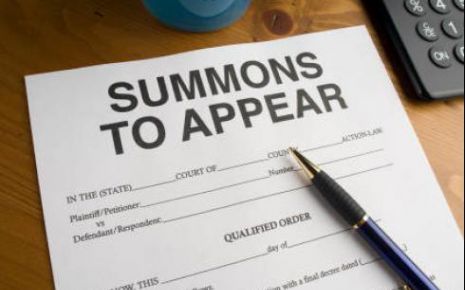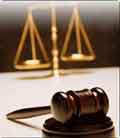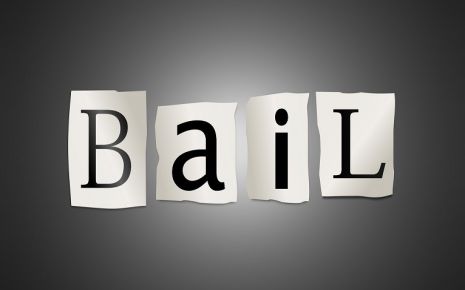Photographic Evidence: Use In Police Investigations And During Trial In Courts
Photography plays a significant role in the criminal justice system, serving
as a valuable tool in both police investigations and court proceedings. Its use
and importance can be seen in various contexts, which will be comprehensively
explored below.
In Police Investigations:
Photography is utilized to meticulously document crime scenes from multiple perspectives, capturing crucial details before any potential evidence is disturbed. These photographs serve as a visual record that can be referenced throughout the investigation and presented in court as evidence.
Moreover, crime scenes photographs help preserve evidence that may deteriorate or be tampered with over time. By capturing the scene as it was initially discovered, investigators can ensure that all relevant details are accurately recorded, even if physical evidence is later moved or altered.
Additionally, photographs are used to document physical evidence, such as bloodstains, fingerprints, weapons, and other items found at crime scenes. These high-quality images provide detailed documentation that can be further analyzed by forensic experts and presented as evidence in court.
Furthermore, photography is instrumental in creating visual aids, such as diagrams, maps, and timelines, to assist investigators and jurors in understanding the sequence of events and spatial relationships within a crime scene. These aids can effectively clarify complex information and strengthen the prosecution's case.
Lastly, photographs are an essential tool in identifying suspects. Surveillance cameras and eyewitness accounts often capture images of suspects at or near crime scenes. These photographs are then distributed to law enforcement agencies and the public to aid in identification and apprehension.
In Court Trials:
Photographs taken during an investigation are crucial pieces of evidence presented in court to support the prosecution's case. These visual aids serve to corroborate witness testimony, confirm crime scene conditions, and establish the presence of physical evidence.
Furthermore, crime scene photographs play a significant role in establishing the context in which the alleged crime occurred. By providing jurors with a visual representation of the scene, they enable a better understanding of the circumstances surrounding the offence.
Photographs are also essential in demonstrating expert testimony. Forensic experts often utilize them to illustrate their findings and conclusions, such as a forensic pathologist using autopsy photographs to explain the cause and manner of death, or a ballistics expert using photographs of bullet trajectories to demonstrate their analysis.
Moreover, during deliberations, jurors may refer to crime scene photographs to refresh their memories and reinforce their understanding of the evidence presented. These photographs can help jurors reach a consensus on the facts of the case and make an informed decision.
In cases where the severity of the crime is a factor in sentencing, photographs depicting the nature and extent of injuries or damage can significantly influence judicial decisions. The graphic images may evoke emotional responses from jurors and judges, highlighting the gravity of the offense.
In summary, photography plays a crucial role in both police investigations and court proceedings. It serves to document crime scenes, preserve evidence, aid in identification, present evidence, establish context, support expert testimony, aid in juror deliberations, and influence sentencing decisions. Its use and importance in the criminal justice system cannot be overstated, as it helps ensure the integrity of investigations, the fairness of trials, and the pursuit of justice.
Evaluation of Photographic Evidence in Court:
During trials, courts use established legal principles and standards to evaluate photographic evidence in order to determine its relevance, authenticity, and reliability. The following are the typical ways in which they assess such evidence:
Relevance: The first step is for courts to determine whether the photographic evidence is relevant to the case at hand. It must directly pertain to a fact in question, such as depicting a crime scene, injuries, or physical evidence.
Authenticity: Courts also make sure to verify the authenticity of photographic evidence to ensure that it accurately represents the scene or subject matter. This involves confirming that the photographs have not been manipulated or altered in any way that could mislead the court.
Chain of Custody: The chain of custody of photographic evidence is also taken into consideration, as courts want to ensure that it has been properly handled and preserved from the time it was taken until it is presented in court. Any gaps or inconsistencies in the chain of custody may raise doubts about the reliability of the evidence.
Expert Testimony: In cases involving complex forensic analysis or technical aspects of photography, courts may rely on expert testimony to explain the content and significance of photographic evidence.
Probative Value vs. Prejudice: Lastly, courts balance the probative value of photographic evidence�its ability to prove or disprove a fact-with any potential prejudice it may cause to the defendant or the fairness of the trial.
By utilizing these criteria, courts ensure that the photographic evidence presented during trials is reliable, fair, and conducive to the pursuit of justice.
Evaluation of Digital Photographic Evidence in Court:
The evaluation of digital photography in court follows similar principles to traditional photographic evidence, but with additional considerations due to its digital nature. In order to assess digital photography, courts typically follow a process that involves several key steps.
One crucial step is authentication, where courts verify the authenticity of digital images to ensure they accurately represent the scene or subject matter. This involves confirming the integrity of the digital file, including metadata such as date, time, and location stamps, which serve as evidence of the photograph's authenticity.
In addition, courts also examine the chain of custody of digital photographs, just as they do with traditional photographs. This ensures that the images have been properly handled and preserved from the time they were captured until they are presented in court. Digital photographs may also undergo forensic analysis to detect any tampering or alterations.
Courts often conduct metadata examination to corroborate the circumstances surrounding the photograph. This includes details such as the device used to capture the image, the settings applied, and the date and time of capture, which can provide valuable context for understanding the photograph.
Another aspect that courts assess is whether any compression and enhancement techniques have been applied to digital photographs. While minor adjustments for clarity or contrast are generally acceptable, significant alterations may raise questions about the accuracy and reliability of the photograph.
In cases involving complex digital evidence, courts may require expert testimony. This can come from forensic analysts or digital imaging experts who can explain technical aspects of digital photography, such as file formats, compression algorithms, and image manipulation techniques. This testimony helps the court better understand and evaluate the digital evidence presented.
Ultimately, objections to the admission of digital photographs may emerge as attorneys question their pertinence, validity, or dependability. In such cases, courts apply established legal criteria and precedents from relevant cases to assess these challenges and determine if the evidence meets the requirements for admissibility. In general, the judicial assessment of digital photography necessitates meticulous examination of technical elements, verification techniques, protocols for maintaining evidence integrity, and expert testimony. This is crucial in guaranteeing that the presented evidence is trustworthy, unbiased, and in accordance with principles of fairness and equity.
Strengths and Weaknesses of Photographic Evidence:
There are many reasons why photographs should be considered strong evidence in a trial. One of them is that visual clarity helps to understand complicated events better with the help of photography's proof because it can corroborate witness statements, offering an objective documentation of events. Furthermore, pictures are thought-provoking and easy to remember, and frequently, they have a lasting impact on jury members.
The weakness of photography is that it lacks context and may lead to misunderstandings. This can also be altered or misinterpreted, which may invalidate its accuracy. A photo does not explain how things change from one state to another, as in an event situation. Lastly, if someone only considers evidence through photos, there is a risk of overlooking other means such as witness accounts and artifacts.
Written By: Md.Imran Wahab, IPS, IGP, Provisioning, West Bengal
Email: [email protected], Ph no: 9836576565
In Police Investigations:
Photography is utilized to meticulously document crime scenes from multiple perspectives, capturing crucial details before any potential evidence is disturbed. These photographs serve as a visual record that can be referenced throughout the investigation and presented in court as evidence.
Moreover, crime scenes photographs help preserve evidence that may deteriorate or be tampered with over time. By capturing the scene as it was initially discovered, investigators can ensure that all relevant details are accurately recorded, even if physical evidence is later moved or altered.
Additionally, photographs are used to document physical evidence, such as bloodstains, fingerprints, weapons, and other items found at crime scenes. These high-quality images provide detailed documentation that can be further analyzed by forensic experts and presented as evidence in court.
Furthermore, photography is instrumental in creating visual aids, such as diagrams, maps, and timelines, to assist investigators and jurors in understanding the sequence of events and spatial relationships within a crime scene. These aids can effectively clarify complex information and strengthen the prosecution's case.
Lastly, photographs are an essential tool in identifying suspects. Surveillance cameras and eyewitness accounts often capture images of suspects at or near crime scenes. These photographs are then distributed to law enforcement agencies and the public to aid in identification and apprehension.
In Court Trials:
Photographs taken during an investigation are crucial pieces of evidence presented in court to support the prosecution's case. These visual aids serve to corroborate witness testimony, confirm crime scene conditions, and establish the presence of physical evidence.
Furthermore, crime scene photographs play a significant role in establishing the context in which the alleged crime occurred. By providing jurors with a visual representation of the scene, they enable a better understanding of the circumstances surrounding the offence.
Photographs are also essential in demonstrating expert testimony. Forensic experts often utilize them to illustrate their findings and conclusions, such as a forensic pathologist using autopsy photographs to explain the cause and manner of death, or a ballistics expert using photographs of bullet trajectories to demonstrate their analysis.
Moreover, during deliberations, jurors may refer to crime scene photographs to refresh their memories and reinforce their understanding of the evidence presented. These photographs can help jurors reach a consensus on the facts of the case and make an informed decision.
In cases where the severity of the crime is a factor in sentencing, photographs depicting the nature and extent of injuries or damage can significantly influence judicial decisions. The graphic images may evoke emotional responses from jurors and judges, highlighting the gravity of the offense.
In summary, photography plays a crucial role in both police investigations and court proceedings. It serves to document crime scenes, preserve evidence, aid in identification, present evidence, establish context, support expert testimony, aid in juror deliberations, and influence sentencing decisions. Its use and importance in the criminal justice system cannot be overstated, as it helps ensure the integrity of investigations, the fairness of trials, and the pursuit of justice.
Evaluation of Photographic Evidence in Court:
During trials, courts use established legal principles and standards to evaluate photographic evidence in order to determine its relevance, authenticity, and reliability. The following are the typical ways in which they assess such evidence:
Relevance: The first step is for courts to determine whether the photographic evidence is relevant to the case at hand. It must directly pertain to a fact in question, such as depicting a crime scene, injuries, or physical evidence.
Authenticity: Courts also make sure to verify the authenticity of photographic evidence to ensure that it accurately represents the scene or subject matter. This involves confirming that the photographs have not been manipulated or altered in any way that could mislead the court.
Chain of Custody: The chain of custody of photographic evidence is also taken into consideration, as courts want to ensure that it has been properly handled and preserved from the time it was taken until it is presented in court. Any gaps or inconsistencies in the chain of custody may raise doubts about the reliability of the evidence.
Expert Testimony: In cases involving complex forensic analysis or technical aspects of photography, courts may rely on expert testimony to explain the content and significance of photographic evidence.
Probative Value vs. Prejudice: Lastly, courts balance the probative value of photographic evidence�its ability to prove or disprove a fact-with any potential prejudice it may cause to the defendant or the fairness of the trial.
By utilizing these criteria, courts ensure that the photographic evidence presented during trials is reliable, fair, and conducive to the pursuit of justice.
Evaluation of Digital Photographic Evidence in Court:
The evaluation of digital photography in court follows similar principles to traditional photographic evidence, but with additional considerations due to its digital nature. In order to assess digital photography, courts typically follow a process that involves several key steps.
One crucial step is authentication, where courts verify the authenticity of digital images to ensure they accurately represent the scene or subject matter. This involves confirming the integrity of the digital file, including metadata such as date, time, and location stamps, which serve as evidence of the photograph's authenticity.
In addition, courts also examine the chain of custody of digital photographs, just as they do with traditional photographs. This ensures that the images have been properly handled and preserved from the time they were captured until they are presented in court. Digital photographs may also undergo forensic analysis to detect any tampering or alterations.
Courts often conduct metadata examination to corroborate the circumstances surrounding the photograph. This includes details such as the device used to capture the image, the settings applied, and the date and time of capture, which can provide valuable context for understanding the photograph.
Another aspect that courts assess is whether any compression and enhancement techniques have been applied to digital photographs. While minor adjustments for clarity or contrast are generally acceptable, significant alterations may raise questions about the accuracy and reliability of the photograph.
In cases involving complex digital evidence, courts may require expert testimony. This can come from forensic analysts or digital imaging experts who can explain technical aspects of digital photography, such as file formats, compression algorithms, and image manipulation techniques. This testimony helps the court better understand and evaluate the digital evidence presented.
Ultimately, objections to the admission of digital photographs may emerge as attorneys question their pertinence, validity, or dependability. In such cases, courts apply established legal criteria and precedents from relevant cases to assess these challenges and determine if the evidence meets the requirements for admissibility. In general, the judicial assessment of digital photography necessitates meticulous examination of technical elements, verification techniques, protocols for maintaining evidence integrity, and expert testimony. This is crucial in guaranteeing that the presented evidence is trustworthy, unbiased, and in accordance with principles of fairness and equity.
Strengths and Weaknesses of Photographic Evidence:
There are many reasons why photographs should be considered strong evidence in a trial. One of them is that visual clarity helps to understand complicated events better with the help of photography's proof because it can corroborate witness statements, offering an objective documentation of events. Furthermore, pictures are thought-provoking and easy to remember, and frequently, they have a lasting impact on jury members.
The weakness of photography is that it lacks context and may lead to misunderstandings. This can also be altered or misinterpreted, which may invalidate its accuracy. A photo does not explain how things change from one state to another, as in an event situation. Lastly, if someone only considers evidence through photos, there is a risk of overlooking other means such as witness accounts and artifacts.
Written By: Md.Imran Wahab, IPS, IGP, Provisioning, West Bengal
Email: [email protected], Ph no: 9836576565
Law Article in India
Legal Question & Answers
Lawyers in India - Search By City
LawArticles
How To File For Mutual Divorce In Delhi

How To File For Mutual Divorce In Delhi Mutual Consent Divorce is the Simplest Way to Obtain a D...
Increased Age For Girls Marriage

It is hoped that the Prohibition of Child Marriage (Amendment) Bill, 2021, which intends to inc...
Facade of Social Media

One may very easily get absorbed in the lives of others as one scrolls through a Facebook news ...
Section 482 CrPc - Quashing Of FIR: Guid...

The Inherent power under Section 482 in The Code Of Criminal Procedure, 1973 (37th Chapter of t...
The Uniform Civil Code (UCC) in India: A...

The Uniform Civil Code (UCC) is a concept that proposes the unification of personal laws across...
Role Of Artificial Intelligence In Legal...

Artificial intelligence (AI) is revolutionizing various sectors of the economy, and the legal i...








Please Drop Your Comments